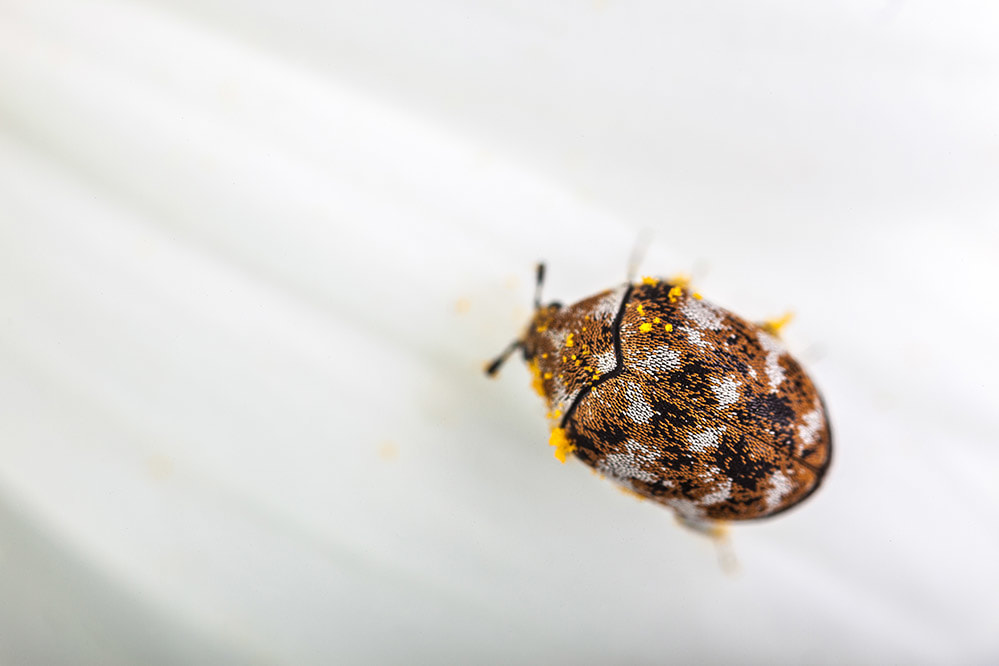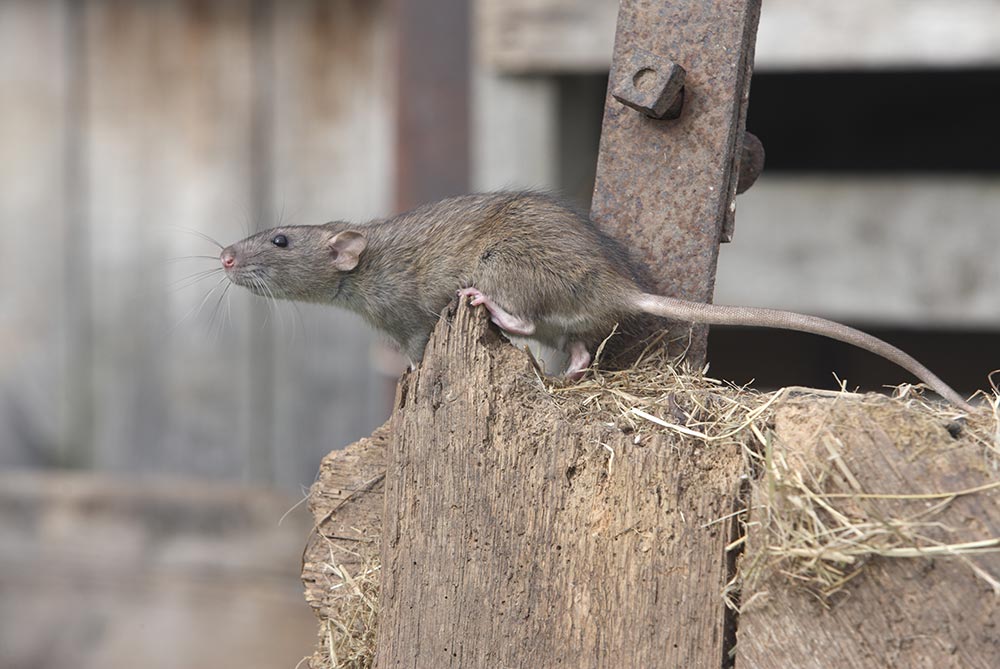Beginners Guide to Identifying and Getting Rid of Carpet Beetles - Baton Rouge Pest Control11/28/2018 Finding creepy crawlies in your home or business can be a major problem. Whether you simply hate sharing your space with so many insects or you don't want to deal with the effects of the bugs, turning to a Baton Rouge pest control team early in your infestation problem can help speed up your recovery. Carpet beetles can wreak havoc on a home and take a while to get rid of. Read through this beginner's guide to learn how to identify the bugs, locate their nest and find the right carpet beetle treatment. How Can You Tell Carpet Beetles Are in Your Home?
Before you can figure out how to get rid of a pest, you need to know what it is. Most adult carpet beetles, which are about the same size as the head of a needle, have a similar look and coloring.
Some varieties may have yellow or white markings on their backs, too. Typically, an infestation includes both adult and larvae forms of the bug. A carpet beetle larva has hair-like protrusions from one or both ends and brown bands running across the back. As you look around your home, you may notice fecal pellets and shed skins. These are common signs of infestation. It may be helpful to call in a Baton Rouge pest control specialist when you first notice these. Another distinguishing feature of the beetle is its movement patterns. These bugs move slowly across floors or carpeted surfaces. If you touch one, it may roll over. Where Are Infestations Concentrated? Carpet beetles can spread across your entire home or office, but typically these pests are drawn to certain areas::
The bugs are typically drawn to fabrics, but they also love dark, secluded locations. A pest control company may be able to help you locate the main group of carpet beetles. How Can You Get Rid of These Pests? The exact carpet beetle treatment you use may vary based on the severity of your infestation. You can get great advice on treatment options from a reputable Baton Rouge pest control company. The following steps may help:
Getting rid of carpet beetles can take a long time. If you don't have the time or equipment to properly clean and protect your house, you can turn to a Baton Rouge pest control company that specializes in carpet beetle treatment.
4 Comments
Any effort at rodent control in New Orleans must consider how to deal with one of the most common rodents in the area, the Norway rat. Successful rodent control depends on knowing where and how your target lives and breeds. Use this information on the Norway rat’s habits and preferences to help you determine if they’re living around you and what to do if they are The Basics
The Norway rat probably came to the North American continent around 1775 on ships arriving from Europe. They’re tremendously adaptable and are prolific breeders, capable of producing as many as 12 litters of up to 22 offspring per year. It’s not surprising that they quickly spread to the 48 contiguous states, even though they usually only live one year in the wild. They are often called by names that describe their color (brown or gray) or where they live (house, barn, sewer or wharf). Because of southern Louisiana’s unique environment, New Orleans pest control companies see a lot of Norway rats. These rodents like to live around people. They find a nourishing diet from stored food as well as garbage and safe places to hide in buildings and other shelters. Urban and suburban residential areas offer garages, basements, water features such as docks and even sewers. Rural habitats include barns, kennels and grain storage facilities, where rats particularly like corn, oats and wheat. If they have a choice, rats will opt for fresh food items. Their nests are usually in burrows on low ground or underground. Norway rats can enter structures by jumping, climbing or swimming to burrow inside walls or under foundations. You’ll also find them living around ponds, along stream banks and in garbage dumps. Signs of Infestation Before beginning any rodent extermination attempt, you have to know what you’re dealing with. It’s important to inspect areas around home foundations, along baseboards, and behind and under stored materials for indications of animal activity. These are some common signs that you’re dealing with Norway rats:
Getting an accurate count of the rats you’re dealing with is impossible, but the evidence you find can help New Orleans pest control companies estimate how severe the problem is:
Ways To Deal With Norway Rats Rats are smart. They memorize the features of their surroundings and are suspicious of any changes they encounter. If they eat a food that makes them ill, it can teach them to avoid that food for some time into the future. New Orleans pest control companies have to outsmart the Norway rat to be successful and often use several methods to eradicate them. Trapping Norway rats are not protected by state or federal law, so the use of traps, with or without bait, is often the first choice. Trapping allows for the removal of trapped animals and can be relatively inexpensive. Unset traps can be placed in areas where rats travel so that they become accustomed to them before setting the trap to spring. It’s also possible to enlarge the trigger area to increase the chance of early success. Using Rodenticides Anticoagulant poisons are often used in today's New Orleans pest control efforts. Because they’re slow-acting, the rats don’t associate any ill feeling with the food they consumed. Offering untainted bait food for several days before applying the toxic substance can increase the chances it will be accepted. When used properly by professionals, rodenticides seldom present dangers to humans, pets or livestock. Rat-Free Living Rodent control efforts can be difficult because of the age of many structures and catastrophic weather damage. Norway and other species of rats find shelter in buildings where they gnaw and burrow through walls, ceilings, doors and floors. While Norway rats are not known to be associated with plague, they can spread diseases such as salmonellosis (food poisoning) to humans as well as livestock, and present the danger of rat-bite fever. If you’ve had to go through eradicating Norway rats, preventing their return is likely high on your list of priorities. Take these steps to thwart them:
For all of these reasons, effective rodent control is important for health and safety. By understanding the basics of Norway rats and rat infestations, you can better assist New Orleans pest control professionals in eradicating these critters from your property. |
AuthorI really enjoy researching and writing about pests. The more we know about bugs, the easier it becomes to control them. Categories
All
Archives
February 2024
|
|
© 2021 Bug Ninja Pest Control.
All rights reserved. |
Services |
Contact |
|




 RSS Feed
RSS Feed

